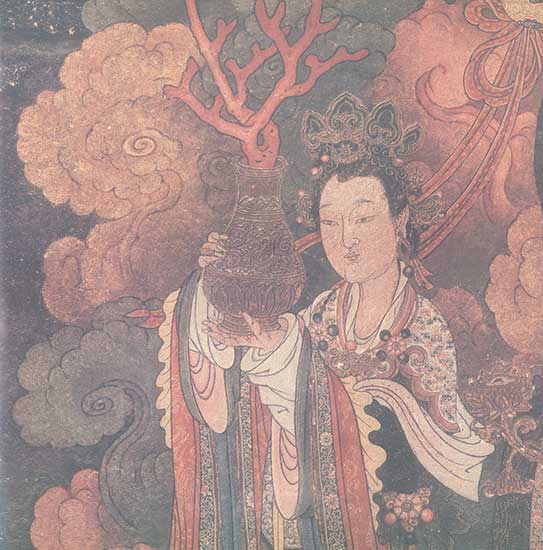 |
|
Under a flashlight the enigmatic beauty of the Fahai frescoes appears in its full glory. When the beam of light is thrown parallel to the frescoes (center), embossed parts of stucco and gold in the artwork are revealed.[Photo by Feng Yongbin/China Daily]
|
However, the status that the murals enjoy today in Chinese art history has not prevented them from vicissitudes, especially in modern times. By the late 19th century the temple compound had been reduced to an ad hoc refugee camp, colonized by paupers and tramps. The temple, once a popular site of pilgrimage, gradually fell into disrepair, a state in which it remained during the tumult in the country in the first half of the 20th century, until the spring 1950, the year following the founding of the People's Republic of China.
Tao Jun is the vice-director of the Fahai Cultural Relics Protection Bureau, the organization directly in charge of the temple's protection and maintenance, with its office on the temple precincts.
"In the spring of 1950, some artists who had heard about Fahai went there to paint en plein air," Tao says. "There they discovered, to their great horror, iron nails driven into the walls of frescoes. It turned out that soldiers stationed there had used the nails as clothes hangers."


























 Raymond Zhou:
Raymond Zhou: Pauline D Loh:
Pauline D Loh: Hot Pot
Hot Pot Eco China
Eco China China Dream
China Dream China Face
China Face






